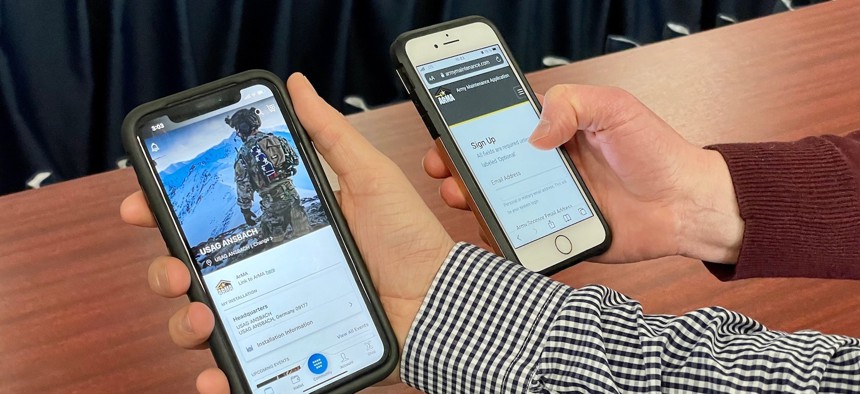Soldiers Can Use Their Phones For Work Under New Army Pilot
Unlike other Pentagon BYOD efforts, this one taps the cloud for a secure remote work experience.
The Army’s bring-your-own-device pilot is live, and waiting for 20,000 users to jump on board.
“Army BYOD is here! I made my first [Microsoft] Teams call using my personal phone today with the wonderful Lily Zeleke, deputy DOD CIO,” Army CIO Raj Iyer exclaimed in a LinkedIn post on Sept. 30.
The Defense Department has several bring-your-own-device efforts that let people use approved devices for work. Despite its security challenges, the concept has gained traction in recent years as defense and intelligence communities were encouraged to use maximum telework policies and technologies early in the COVID-19 pandemic.
Unlike the department’s other BYOD efforts, the Army’s process ”provides secure access without actual data being processed on the device”, an Army spokesperson told Defense One via email.
In the Army's version of bring-your-own-device, data isn’t stored on the device itself, but rather pixels are streamed in, with the data remaining in the cloud. That means users won't have to surrender their personal devices to be managed by the Army, or risk confiscation if there’s a security breach.
“The call was flawless with no degradation in video quality even though the Hypori Halo app is streaming pixels from the cARMY cloud to the mobile device,” Iyer wrote.
The pilot, which has been in the works for more than a year, will accept 20,000 users across the Army, including 5,000 in the National Guard, 5,000 in the Army Reserves, and 10,000 active-duty and civilian workers. The first users joined the Army BYOD environment on Sept. 30, after the service conducted “additional cybersecurity testing” and assessments of the process before the launch.
The BYOD pilot is one of several Army IT modernization efforts, which also include moves to cloud-based email and Google Workspace.
Moreover, Iyer envisions the Army completely switching to a virtual desktop infrastructure for unclassified and classified work in the next two to three years.
The Army plans to add those initial 20,000 users over the next year and gather feedback on how effective it is. Senior leaders are expected to analyze the pilot program’s results early next year and plan an Army-wide deployment in fiscal year 2023.





